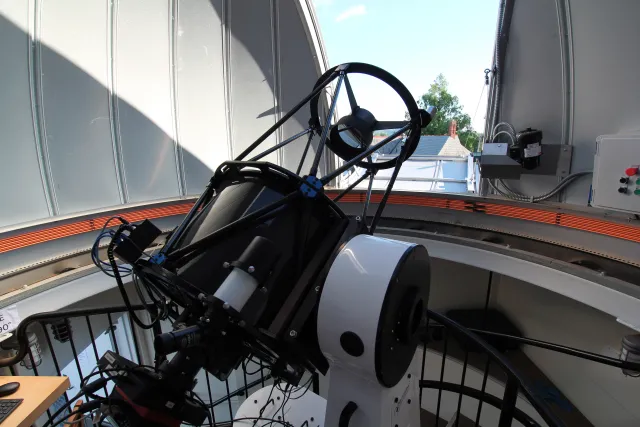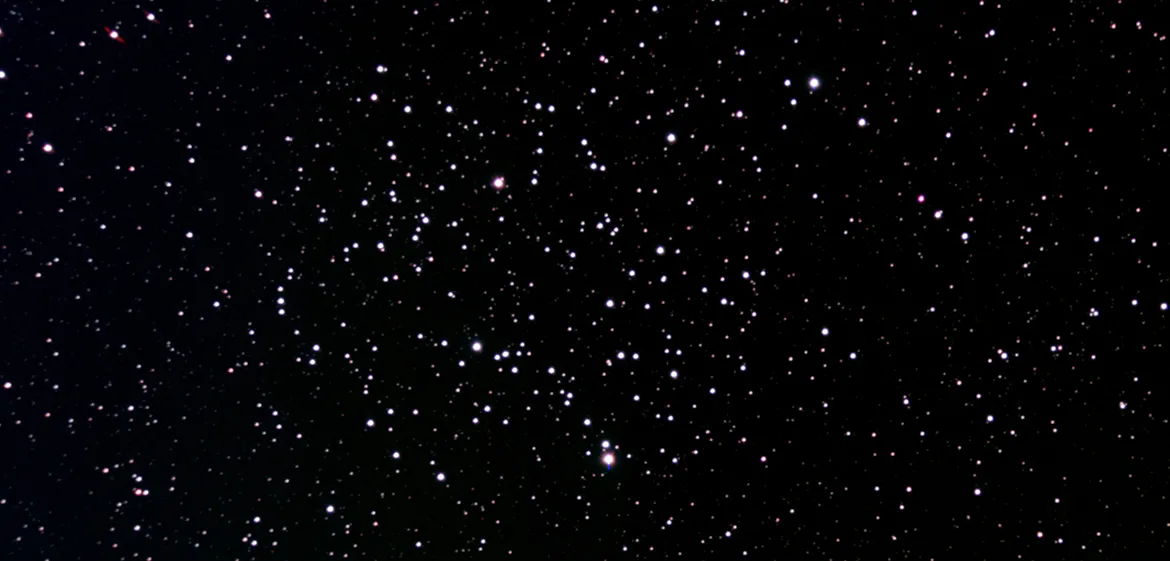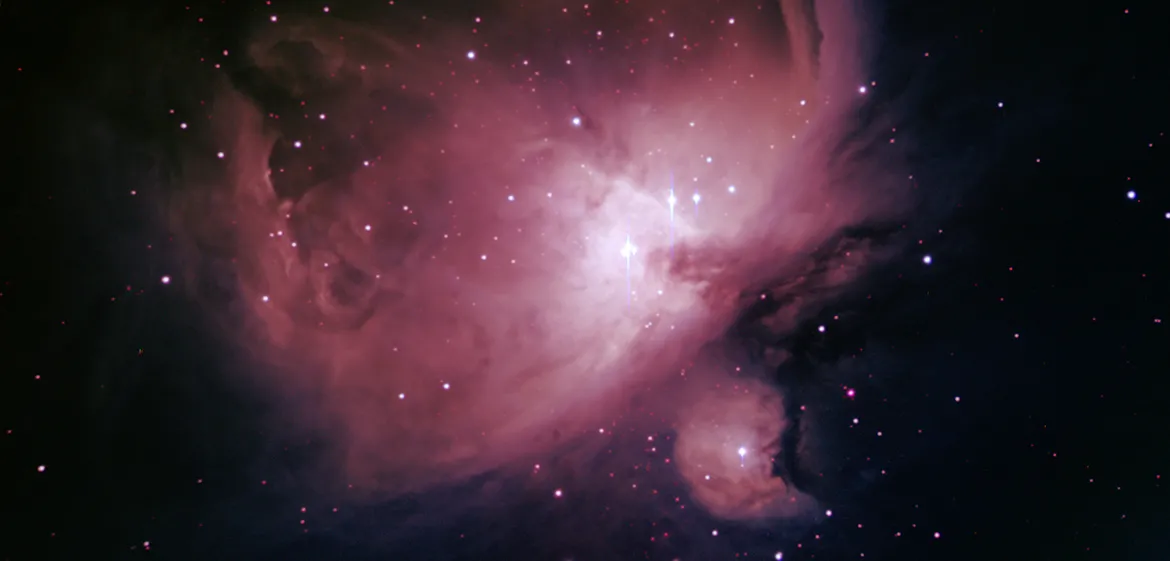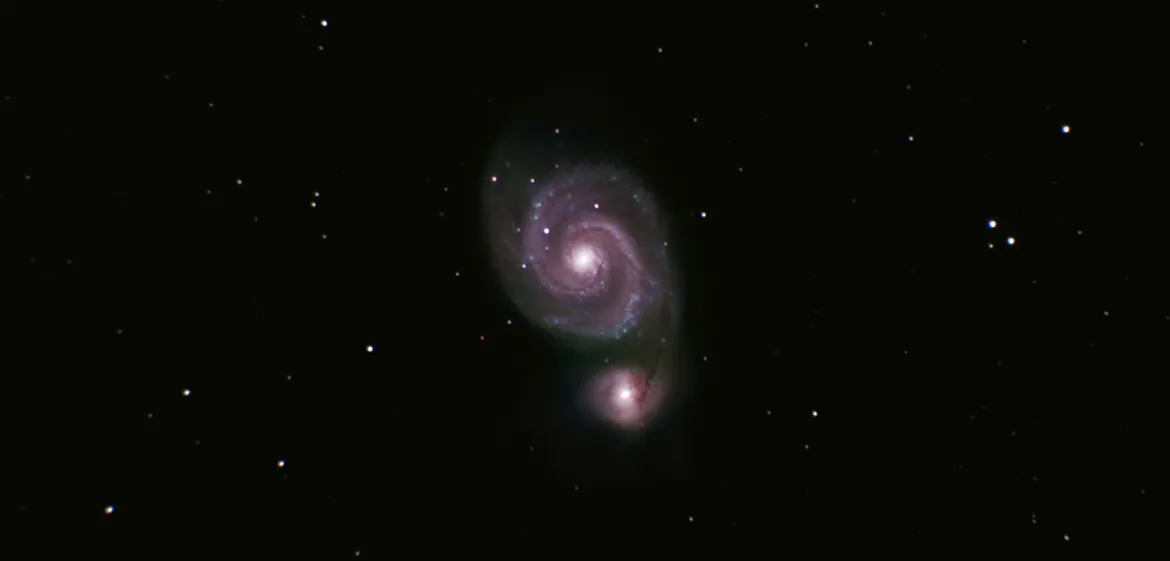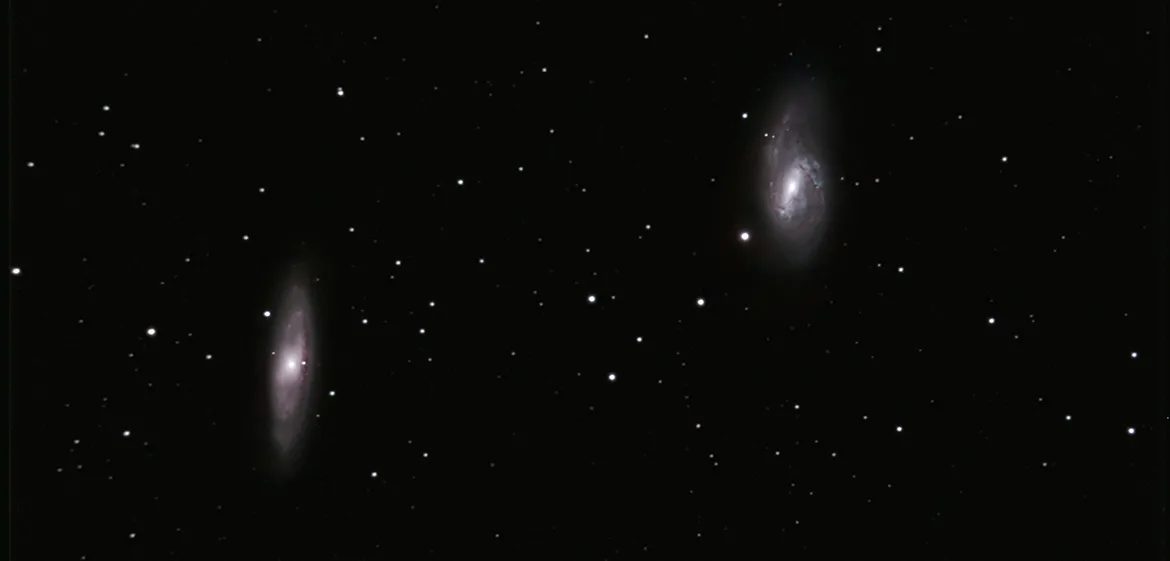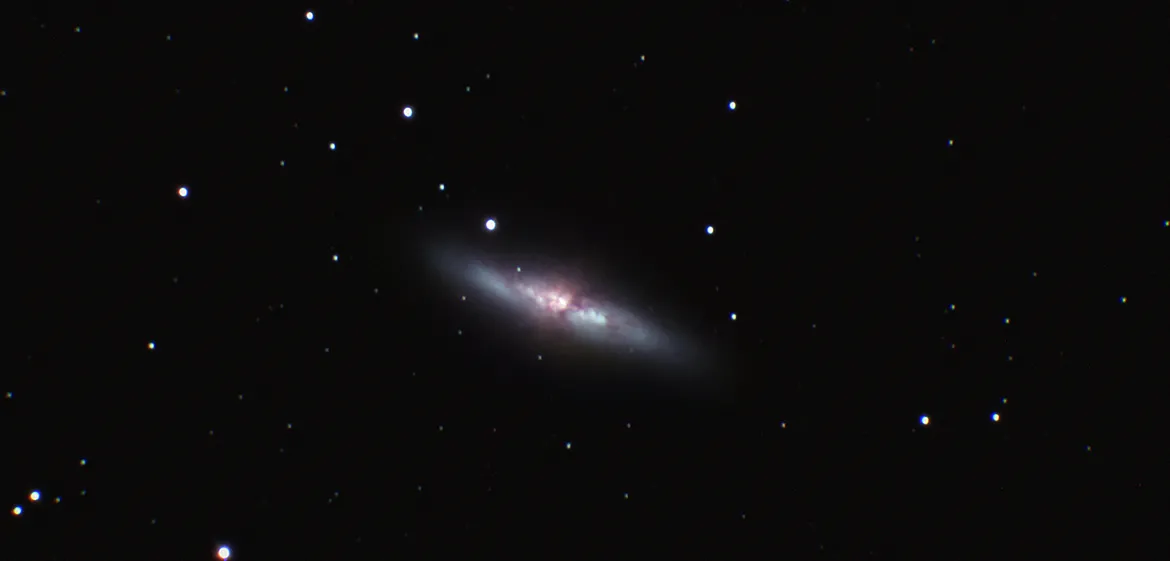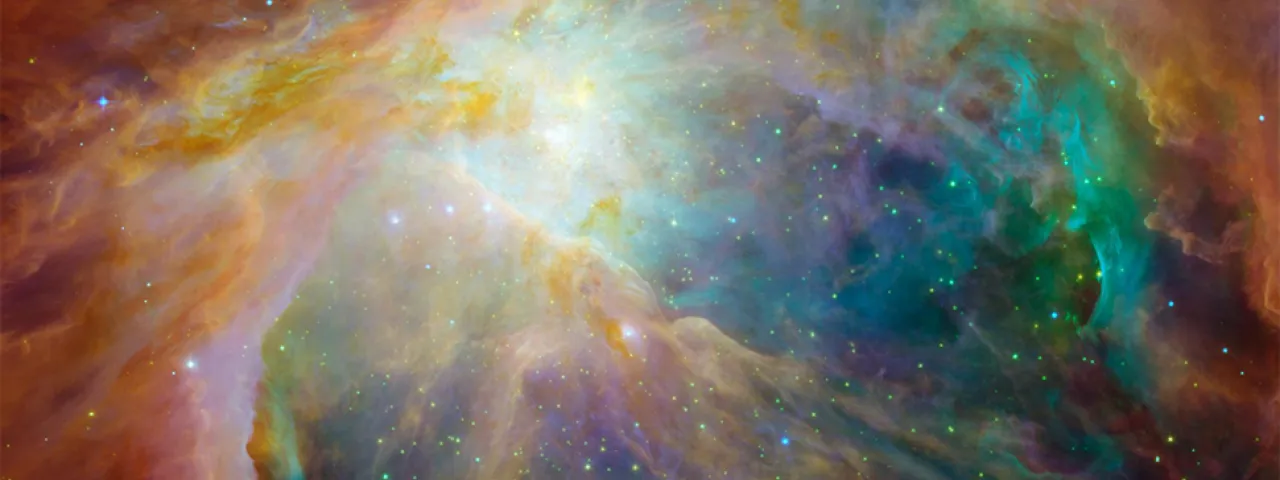
Astronomy
Smith astronomy is a part of the Five College Astronomy Department. The consortium offers a rich curriculum in astronomy and astrophysics, taught by astronomers from Smith, Amherst College, Hampshire College, Mount Holyoke College and the University of Massachusetts. Students who major in astronomy also take courses in physics and often double major in physics and astronomy.
Astronomy is the study of the cosmos, from our home planet to the farthest reaches of the universe. One of the original liberal arts, astronomy offers an unparalleled perspective for appreciating our planet and the life that it supports. It also provides an opportunity to appreciate the simplicity of the forces of nature and understand how these forces govern the origin and evolution of our universe.
Requirements & Courses
Goals for Majors in Astronomy
- Be an active learner/researcher; be able to recognize and define important questions and know how to go about finding the answers.
- Be familiar with basic concepts from physics and astronomy, including gravity, the nature of light and physical characteristics of matter, and be able to use them as the basis for critical reasoning.
- Be skilled at quantitative problem solving incorporating hypothesis formation, data analysis, error analysis, conceptual modeling, numerical computation and hypothesis testing through quantitative comparison between observation and theoretical concepts.
- Be familiar with scientific instrumentation used by professional astronomers.
- Be familiar with digital imaging as a source of scientific data, including techniques of acquisition, reduction and analysis.
- Demonstrate use of critical thinking skills in well-organized, logical and scientifically sound oral and written scientific reports.
- Be able to critically evaluate representations of science in the media, both in writing and in speaking.
- Be able to communicate science effectively to the general public and the media.
- Be aware of and prepared for the variety of opportunities and career paths that are open to students who have majored in astronomy.
Astronomy Major
The astronomy major provides a good foundation in modern science with a focus on astronomy. Taken alone, it is suited for students who wish to apply scientific training in a broad general context. If coupled with a major in physics, the astronomy major or minor provides the foundation to pursue a career as a professional astronomer. Advanced courses in mathematics and a facility in computer programming are strongly encouraged.
Requirements
Eleven courses (44 credits)
- AST 100 or AST 111
- AST 113
- AST 235
- Two courses at the 200 level
- One course at the 300 level
- PHY 117 and PHY 118
- Three courses at the 200 or 300 level
Students with especially strong background in physics or astronomy may, in consultation with their advisers, replace AST 111 with a more advanced course. Up to two of the three courses at the 200 or 300 level may, after consultation with and approval by the major advisor, be selected from 200- or 300-level courses in a related discipline such as mathematics, physics, geology, computer science or the history or philosophy of science.
Astronomy Minor
The minor provides a practical introduction to modern astronomy. If combined with a major in another science or mathematics related field, such as geology, chemistry or computer science, it can provide a versatile scientific background that would prepare a student for future work as a scientist or technical specialist. Alternatively, the minor may be combined with a major in a nonscientific field, such as history, philosophy or education, for students who wish to apply their astronomical backgrounds in a broader context, which could include history of science, scientific writing or editing, or science education.
Requirements
Six courses (24 credits)
- AST 100 or AST 111
- One course at the 200 level
- PHY 117
- Two astronomy courses
- One course in astronomy or physics
Astrophysics Minor
The astrophysics minor is an alternate option for the student who is considering a career as a professional astronomer. Central to this approach is a strong physics background, coupled with an exposure to topics in modern astrophysics. Students are advised to acquire a facility in computer programming. Especially well-prepared students may enroll in graduate courses in the Five College Astronomy Department.
Requirements
Completion of physics major plus any three astronomy classes except AST 100, AST 102, AST 103 and AST 111.
Courses
Good choices for first-year astronomy courses for science majors are AST 111 and AST 113. Courses designed for nonscience majors who would like to know something about the universe are AST 100, AST 102 and AST 103.
AST 100 A Survey of the Universe (4 Credits)
Discover how the forces of nature shape our understanding of the cosmos. Explore the origin, structure and evolution of the Earth, moons and planets, comets and asteroids, the Sun and other stars, star clusters, the Milky Way and other galaxies, clusters of galaxies, and the universe as a whole. Designed for nonscience majors. Enrollment limited to 50. Natural Science
Fall, Spring
AST 102 Sky and Time (4 Credits)
This course explores the astronomical roots of clocks and calendars, and relies on both real and simulated observations of the Sun, Moon and stars. In addition to completing weekly projects based on collecting and interpreting data, students independently research a clock and a calendar from another culture, either ancient or modern. There are no prerequisites, and students from all disciplines and backgrounds are welcome. Enrollment limited to 25. Natural Science
Spring
AST 103 Sky and Telescopes (3 Credits)
Discover how astronomers know about the universe by observing the light that comes to us from distant objects. View the sky with your naked eye, binoculars, and a small telescope. Take pictures with a professional telescope, and examine astronomical images. Designed for non-science majors. Enrollment limited to 20. Natural Science
Fall
AST 111 Introduction to Astronomy (4 Credits)
A comprehensive introduction to the study of modern astronomy, covering planets their origins, orbits, interiors, surfaces and atmospheres; stars their formation, structure and evolution; and the universe its origin, large-scale structure and ultimate destiny. This introductory course is for students who are planning to major in science or math. Prerequisite: MTH 111 or equivalent. Natural Science
Fall
AST 113 Telescopes and Techniques (4 Credits)
An introduction to observational astronomy for students who have taken or are currently taking a physical science class. Become proficient using the telescopes of the McConnell Rooftop observatory to observe celestial objects, including the Moon, the Sun, the planets, stars, nebulae and galaxies. Learn celestial coordinate and time-keeping systems. Find out how telescopes and digital cameras work. Take digital images of celestial objects and learn basic techniques of digital image processing. Become familiar with measuring and classification techniques in observational astronomy. Restrictions: Not open to students who have taken AST 103. Enrollment limited to 20. Natural Science
Spring
AST 200 Astronomical Data Science (4 Credits)
This course introduces the computational, statistical and data visualization techniques essential to research and further coursework in astronomy and other STEM majors. Students learn how to use the Python programming language to analyze and manipulate data; how to create, interpret and present visualizations of those data; and how to apply statistical analysis techniques to astronomical data. Students use real databases from major international observatories spanning a variety of research areas, e.g., star properties across the galaxy, exoplanet discoveries, deep surveys of distant galaxies, asteroids and comets in the solar system, and more. Prerequisites: AST 100, AST 111 or AST 235. CSC 110 or equivalent recommended. Enrollment limited to 25. Natural Science
Spring
AST 214 Astronomy & Public Policy (4 Credits)
This course explores the intersection of physical science, social science, psychology, politics and the environment. How do scientists, decision makers and the public communicate with each other, and how can scientists do better at it? What should the role of scientists be in advocacy and social movements? How does scientific information influence lifestyle and behavior choices among the public at large? The course focuses on three topics with close ties to astronomy: (1) global climate change, which involves basic atmospheric physics; (2) light pollution, which wastes billions of dollars per year and ruins our view of the starry sky without providing the safety it promises; and (3) controversial development of mountaintop observations such as the Thirty Meter Telescope on Mauna Kea, HI. Throughout the course students develop science communication skills using proven techniques borrowed from theater. Prerequisite: one college science course in any field and MTH 111 or the equivalent. Enrollment limited to 20. Natural Science; Social Science
Fall, Spring, Alternate Years
AST 223 Planetary Science and Exoplanets (4 Credits)
How do planets work, and what are they made of? What are their origins? What physical processes are important on planets with different surface gravity or no atmosphere? How are remote measurements made that help answer these questions? What are planetary systems orbiting other stars like, and how do these systems compare to our own Solar System? In this course, students explore other planetary bodies in our Solar System and those in other stellar systems – exoplanets – and learn about their physical, chemical, and geological properties and evolution. Prerequisites: MTH 111 or equivalent and one of GEO 101, AST 100 or AST 111. PHY 117 or equivalent recommended. Enrollment limited to 45. Natural Science
Fall, Variable
AST 226 Cosmology (4 Credits)
This course begins with the discovery of the expansion of the universe, and moves on to current theories of the expansion. Students consider cosmological models and topics in current astronomy that bear upon them, including the cosmic background radiation, nucleosynthesis, dating methods, determination of the mean density of the universe and the Hubble constant, and tests of gravitational theories. Prerequisites: (AST 100 or AST 111) and MTH 111, or equivalent. Natural Science
Fall, Spring, Alternate Years
AST 235 Introduction to Stellar Structure (4 Credits)
A calculus-based introduction to the observations and theoretical understanding of the structure and evolution of stars. Topics include astrometry, photometry, spectroscopy, the Planck function of thermal emission, cause of spectral emission and absorption lines, Boltzmann and Saha distributions of atomic energy levels and ionization states, the Hertzprung Russell diagram, binary stars and stellar mass determination, nuclear energy generation in stars, hydrodynamic equilibrium, equations of state, and the fates of stars. Prerequisites: [(PHY 117 and PHY 118) or PHY 119] and MTH 112. Natural Science
Fall
AST 337 Observational Techniques in Optical and Infrared Astronomy (4 Credits)
This course provides an introduction to the techniques of gathering and analyzing astronomical data, with an emphasis on optical observations related to studying stellar evolution. Students use Smith’s telescopes and CCD cameras to collect and analyze their own data, using the Python computing language. Topics covered include astronomical coordinate and time systems; telescope design and optics; instrumentation and techniques for imaging and photometry; astronomical detectors; digital image processing tools and techniques; atmospheric phenomena affecting astronomical observations; and error analysis and curve fitting. Prerequisites: AST 226 or AST 235; and one physics course at the 200-level. Previous experience in computer programming strongly recommended. Natural Science
Fall
AST 341 Seminar: Observational Techniques II (4 Credits)
An immersive research experience in observational astrophysics for students who have completed AST 337. Students design an independent scientific observing program and carry it out at the Perkins 1.8m telescope near Flagstaff, AZ in January. The rest of the semester is spent reducing and analyzing the data obtained and preparing scientific results for presentation. Professional techniques of CCD imaging, photometry, astrometry and statistical image analysis are applied using research-grade software. Possible projects include studying star formation regions and star formation histories in external galaxies, measuring ages and chemical composition of star clusters, searching for exoplanets, supernova or eclipsing binary stars. Prerequisites: AST 337. Restrictions: Juniors and seniors only. Enrollment limited to 10. Instructor permission required.
Fall, Spring, Variable
AST 400 Special Studies (1-4 Credits)
Independent research in astronomy. The student is expected to define their own project and to work independently, under the supervision of a faculty member. Instructor permission required.
Fall, Spring
Additional Programmatic Information
Major and Minor Advisers:
James Lowenthal; Kimbely Ward-Duong
Honors Directors:
James Lowenthal; Kimberly Ward-Duong
Faculty
Emeriti
Suzan Edwards
L. Clark Seelye Professor Emerita of Astronomy
Richard White
Professor Emeritus of Astronomy
McConnell Rooftop Observatory
Image Gallery
Images taken with our 12- and 16-inch telescopes.


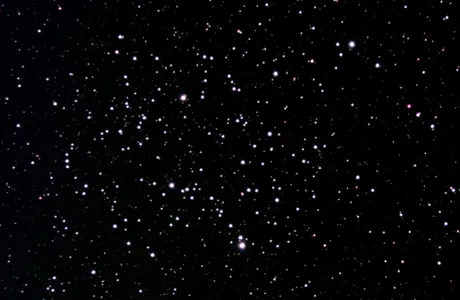
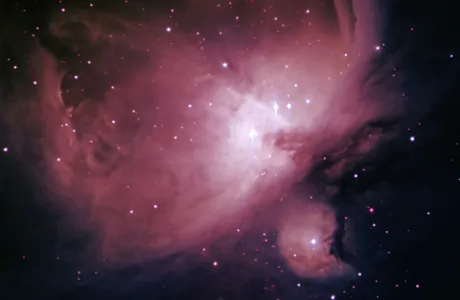
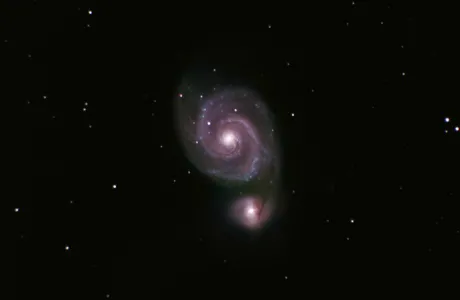
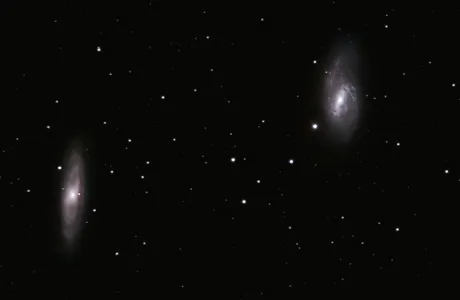
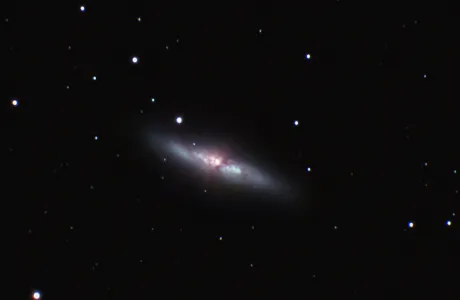
Resources
Contact Department of Astronomy
McConnell Hall
Smith College
Northampton, MA 01063
Phone: 413-585-6995 Email: jlowenth@smith.edu
Department Chair: James Lowenthal
Individual appointments can be arranged directly with the faculty.



